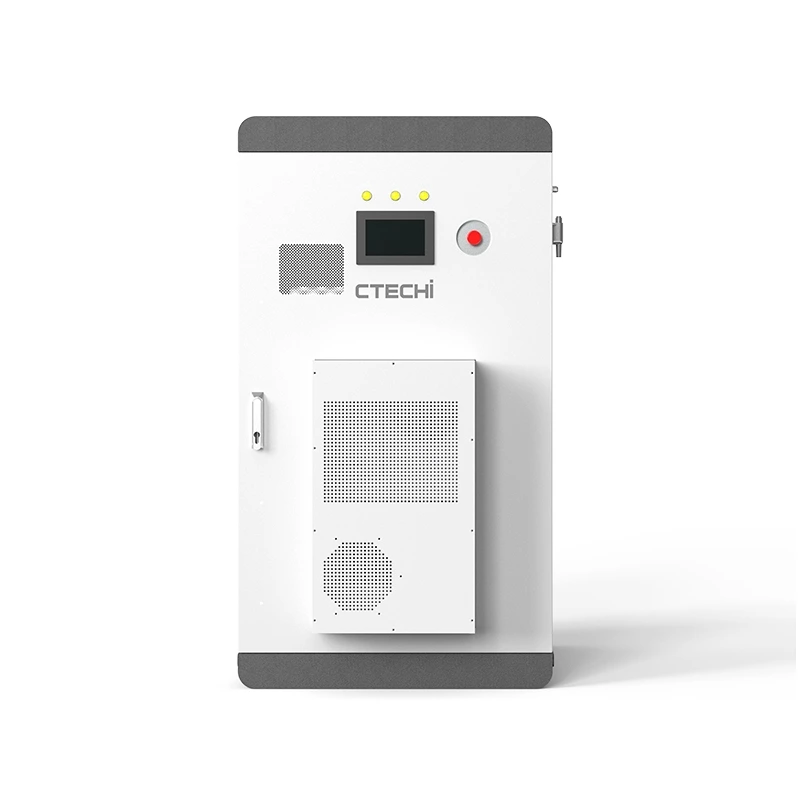How to Create a Green Energy System Combining Vehicle Charging, Storage and Supply?
What problems does it solve from your customer perspective?
-
Vehicle charging demand spikes. When you operate a charging station for electric vehicles, or equipment that draws heavy power, you may cause high peak demand charges or overload grid connections. The 50 kW output of the system lets you support EV charging or heavy loads without over-taxing your grid.
-
Intermittent grid reliability. In many regions, the grid may be unstable or costly. With 108 kWh of usable capacity (with 95% depth of discharge) the system provides meaningful backup or load-shifting capability.
-
Solar integration and energy independence. This BESS supports photovoltaic input (with MPPT controllers) and can operate both on-grid and off-grid, giving you flexibility to store excess solar energy and dispatch when needed.
-
Reducing energy costs & demand charges. By storing energy at off-peak times and discharging during peaks (including while vehicles charge), you can shave demand, reduce utility bills, and improve your business model from an energy-cost standpoint.
-
Outdoor installation readiness & harsh environments. The system is designed for outdoor installation (IP55 rated), temperature range -20 °C to +60 °C, and altitude up to 3000 m.
How to use it – key considerations for you as buyer and operator
-
Site assessment & load profiling. You will need to evaluate your charging load (vehicle or equipment), your grid supply limitations, and your future expansion plans. For example: how many EV chargers do you plan? What peak load do they draw? Will the BESS need to supply only the chargers, or the whole site during a blackout?
-
Integration with EV charging infrastructure. Connect the BESS to your EV charger bank so that energy can be drawn from the battery during charger-demand peaks, instead of pulling entirely from the grid. Program your EMS (Energy Management System) to prioritise vehicle charging from stored energy when grid tariffs are high.
-
Solar PV coupling. If you have rooftop solar or a ground-mount plant, configure the dual MPPT PV input (system supports up to 76.8 kW PV input) so midday excess electricity can be stored, and then used for vehicle charging in the afternoon/evening when tariffs or demand might rise.
-
Control and monitoring. Use the built-in EMS, WiFi and app connectivity for real-time monitoring of battery state-of-charge, BMS alerts, PV import/export data and vehicle charger demand. From your operator point of view, this means fewer surprises and smoother operations.
-
Installation and maintenance planning. The system dimensions are approx 880 × 1050 × 1600 mm, weight around 1000 kg. Outdoor installation with a canopy is recommended. Cooling is via intelligent air system—make sure airflow and ventilation are adequate.
-
Scalable future expansion. You might begin with one unit for your vehicle-charging site, but as fleet size grows you can parallel more units (modular architecture) to scale up to higher capacity initially or later.
Application Scenarios – where this system really works
-
Fleet charging hub for commercial vehicles. A company operating delivery vans, minibuses or service vehicles that are electric can pair the BESS with chargers. The BESS manages evening charging and grid demand peak, ensuring vehicles are ready by morning.
-
Industrial plant with heavy lift equipment. If you have a warehouse with forklifts, aerial work platforms, or other large motors, you can use the system to buffer the load and avoid grid-draw spikes and potential brownouts.
-
Commercial campus with mixed loads and EV parking. For example a hotel or business park with EV guests/employees, HVAC load, lights – the BESS allows smoothing of loads, solar integration, and having the EV chargers draw from storage rather than grid only.
-
Remote or off-grid site with EV or mobile equipment support. For instance a micro-grid on an island resort or farm vehicle charging site – the 50 kW output and solar support make it viable for remote energy autonomy.
-
Data centre or telecom station with backup + EV support. When you host a data centre or telecom tower site that also has vehicle service or maintenance vehicles, this system gives you combined backup and operational supply.
Why this matters for your business
From a business buyer’s perspective, energy resilience and cost control are now as critical as core operations. The CTECHI BESS allows you to shift from being a power consumer reacting to the grid, to being an energy manager proactively optimising and controlling your consumption and supply. Whether for charging fleets, handling site loads, or integrating renewable energy, you gain reliability, flexibility and long-term cost advantage. As you scale your fleet or your facility, you won’t be limited by your grid connection or surprise demand charges. Instead, your energy system works for you.




